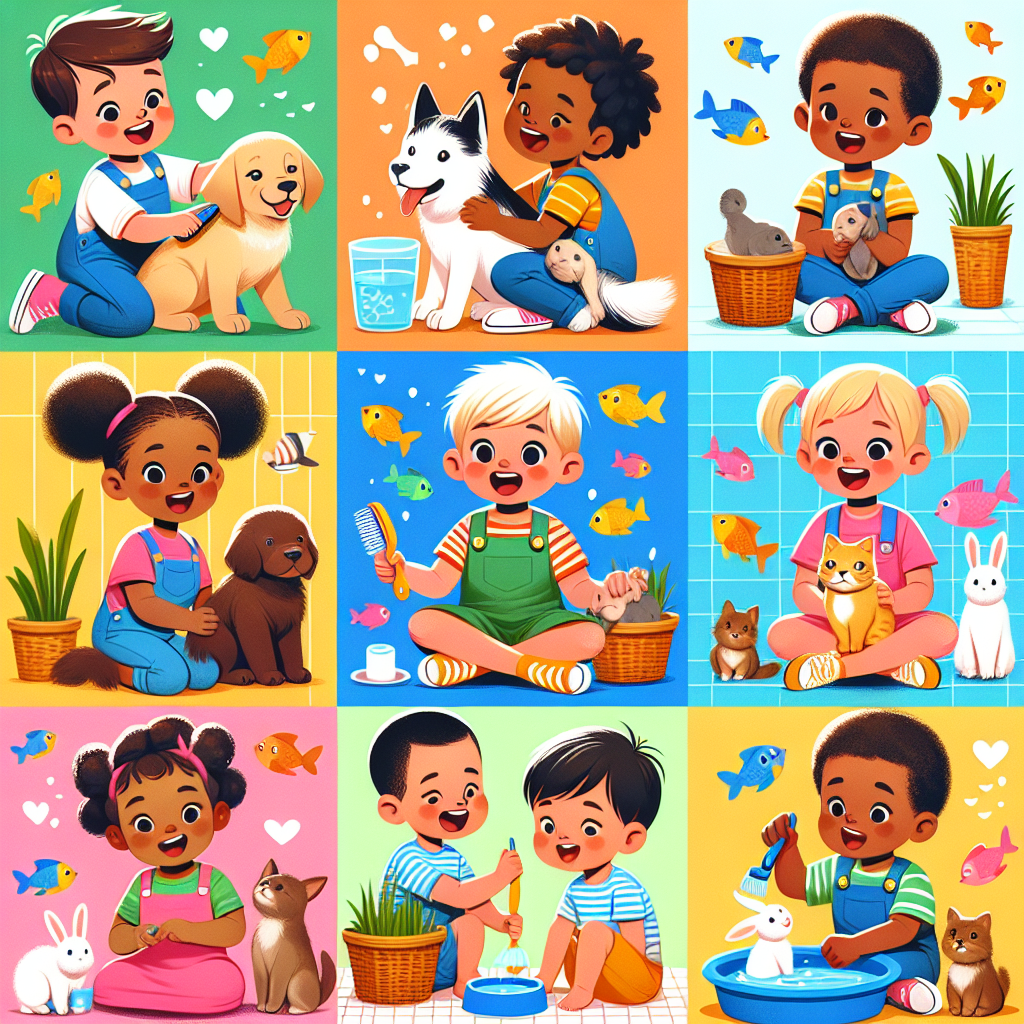Top 10 Pet Care Tips for Kids: Fun & Safe Ways to Help Pets
Pets can bring immense joy to a child’s life, but caring for them is a big responsibility that can be both fun and educational. Teaching kids about pet care not only helps to foster a lifelong love for animals but also instills essential values such as empathy and responsibility. This blog post explores the Top 10 Pet Care Tips for Kids, offering practical and engaging ideas to enhance the pet ownership experience for everyone involved.
1. Start with Basic Needs: Food and Water
Understanding a pet’s basic needs is the first step in responsible pet care. Teach kids how to:
- Measure food portions according to guidelines provided by a veterinarian or pet food packaging.
- Ensure fresh water is always available. Kids can establish a routine to refill water bowls daily, which helps develop responsibility.
2. Daily Exercise: Fun Bonding Activities
Exercise is vital for a pet’s physical and mental well-being. Kids can help by:
- Taking dogs for walks or engaging in interactive play sessions with cats.
- Learning about the exercise needs specific to their pet’s breed. For example, active breeds like Border Collies need more playtime compared to others.
3. Keep It Clean: Grooming and Hygiene
Grooming is an essential part of pet care that can also be a fun bonding experience for kids. Involve them in:
- Brushing their fur: This not only keeps pets healthy but also allows kids to spend quality time with them.
- Bathing: Teach proper techniques for bathing, which can be a fun splashing event, especially for dogs.
4. Safe Space: Provide Comfort and Security
Pets need safe and designated spaces in the home. Encourage kids to:
- Create a cozy pet corner with blankets and toys.
- Understand the pet’s preference for quiet areas where they can retreat when feeling stressed or tired.
5. Learn about Nutrition: Balanced Diet
Understanding what constitutes a balanced diet is crucial. Kids can be involved in:
- Reading food labels together and identifying key ingredients.
- Exploring healthy treats, perhaps even helping prepare homemade snacks under parental guidance.
6. Training Time: Behavior Basics
Teaching kids to train pets can be both rewarding and educational. They can:
- Learn basic commands like “sit” and “stay,” which reinforces discipline and encourages a stronger bond.
- Understand the importance of positive reinforcement, which fosters a nurturing environment.
7. Health Check: Recognizing Signs of Illness
Education about a pet’s health can prepare kids to be observant caregivers. Teach them to:
- Recognize symptoms like unusual lethargy or changes in eating habits, which can indicate a need for veterinary attention.
- Keep a log of vet appointments and vaccinations to ensure pets stay healthy.
8. Socialization: Making Friends
Socializing pets helps them behave better and lowers anxiety. Show kids how to:
- Introduce their pets to other animals and people in controlled environments.
- Observe body language cues to keep interactions safe and enjoyable for everyone involved.
9. Respecting Boundaries: Understanding Animal Behavior
Teaching kids to respect animals’ boundaries promotes a safe environment. Kids should:
- Learn when a pet wants to be left alone, such as when they are eating or sleeping.
- Understand that different animals have unique temperaments, so they should be aware of their pet’s moods.
10. Fun and Responsible Playtime
Playtime should be both fun and safe. Encourage kids to:
- Choose toys that are appropriate for their pet type, avoiding small items that could be swallowed.
- Engage in games that challenge their pet’s mind, like puzzle toys, to keep them mentally stimulated.
Pet Notes
To summarize the benefits of involving kids in pet care:
- Fosters Responsibility: Kids learn to care for another being, encouraging maturity.
- Builds Empathy: Understanding a pet’s needs instills compassion.
- Enhances Learning: Kids expand their knowledge about animal care and health.
- Encourages Active Living: Regular play and exercise improve both pet and child’s physical health.
- Creates Memories: Shared experiences with pets strengthen family bonds.
Incorporating these Top 10 Pet Care Tips for Kids into daily routines not only assists in the well-being of pets but also enriches a child’s development. By fostering a sense of responsibility and empathy through pet care, you’re instilling values that will last a lifetime.
For more information on pet care education, you can refer to the ASPCA and American Veterinary Medical Association for resources and guidelines.

